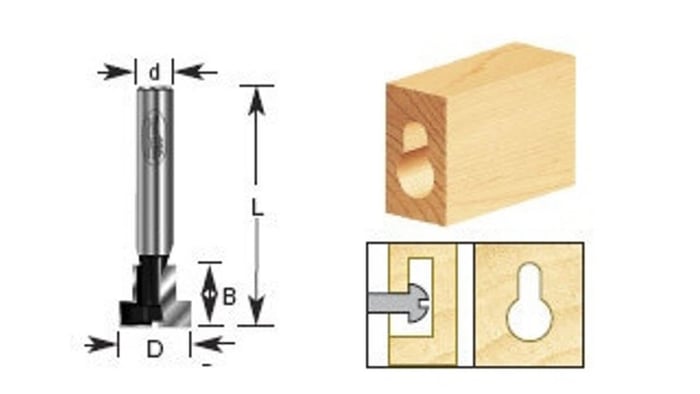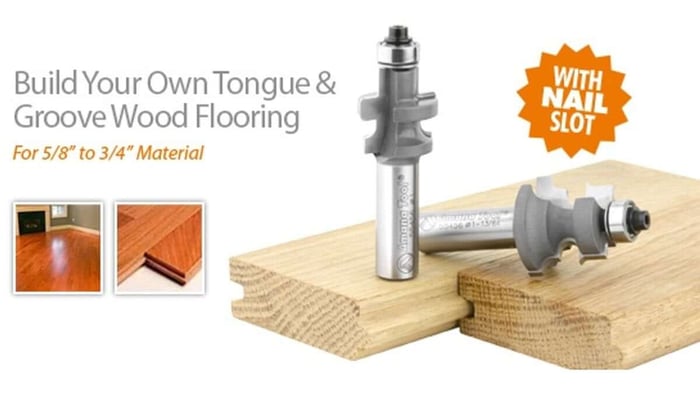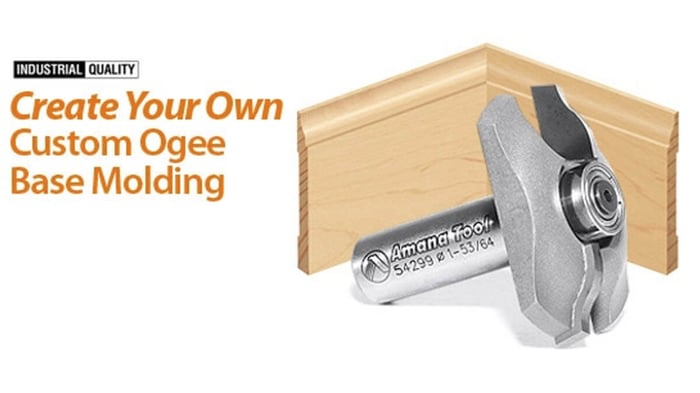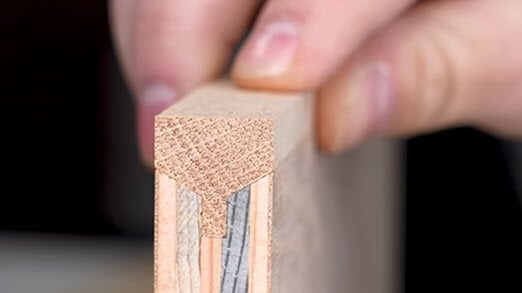
Using a Keyhole Router Bit
If you are interested in incorporating stylish keyhole slots into your woodworking projects, utilizing a keyhole router bit is the ideal solution.
This article aims to provide insights into the keyhole bit, including its definition and the procedure for cutting a keyhole slot. Additionally, valuable tips and tricks for maximizing the effectiveness of this tool will be discussed, along with common errors to steer clear of.
What is a Keyhole Router Bit?
A keyhole bit serves as a specialized cutting tool utilized in woodworking to fashion keyhole slots necessary for securely hanging objects on walls. These router bits feature a unique shape that enables the efficient and precise creation of keyhole slots. Woodworkers can effortlessly produce slots that firmly support screws or nails for hanging mirrors, picture frames, shelves, and other wall-mounted items by employing a keyhole router bit.
Renowned for its versatility, this tool can be applied to diverse wood types and materials. The outcome is a neat and polished finish, rendering it a favored option for both DIY enthusiasts and professional woodworkers.
Steps for Cutting a Keyhole Slot
Achieving a precise keyhole slot requires following multiple steps meticulously to achieve a polished and expert result. It is essential to adhere to a comprehensive guide tailored for woodworking enthusiasts.
Preparation and Safety Measures
Prioritizing preparation and safety measures is crucial before embarking on any woodworking project, especially when utilizing a keyhole router bit. This will help prevent accidents and ensure a smooth workflow.
Safety gear is essential, such as eye protection to guard against wood chips or debris, dust masks to prevent inhaling harmful particles, and sturdy gloves to protect hands from cuts or splinters. Additionally, preparing the workspace by clearing clutter and securing the material firmly in place can minimize the risk of slips or unexpected movements during cutting.
By taking these precautions, not only will efficiency be promoted, but your well-being will also be prioritized while working on woodworking projects.
Setting up the Router and Bit
Properly configuring the router and correctly installing the suitable keyhole router bit are crucial steps to achieve accurate and clean cuts in your woodworking project.
To ensure a successful setup, the first step is to adjust the depth gauge on the router to match the desired cutting depth. This adjustment is vital for controlling the depth of the cut, ensuring you do not cut too deep or too shallow.
Following this, securely attach the keyhole router bit, making sure it is aligned straight and centered. Once the bit is in position, adjust the depth stop to limit how far the bit penetrates into the material, ensuring consistent results.
Using a template guide can further improve precision by directing the router along the desired pattern, resulting in uniform cuts. Properly aligning the router bit within the template guide is essential for precise routing and achieving the intended design.
By meticulously following these steps, you can enhance the performance of your router and create woodworking projects of professional quality.
Cutting the Keyhole Slot
When cutting a keyhole slot, it is essential to handle the router's speed and direction with precision to achieve a smooth and accurate result. This process requires guiding the router along the marked lines in a steady and fluid manner to create a slot that is neat and precise. It is important to adjust the speed of the router according to the material being cut - slower speeds are preferable for hardwoods, whereas faster speeds are more suitable for softwoods.
Maintaining a steady hand is crucial, as any sudden movements can lead to rough or uneven edges. By following these guidelines and exercising patience, one can develop the skill of cutting keyhole slots with finesse.

ToolsToday carries two lines of keyhole router bits; precision Amana bits and more economical Timberline bits.
Tips and Tricks for Using a Keyhole Router Bit
Achieving proficiency in utilizing a keyhole router bit requires acquiring knowledge of different tips and techniques that can enhance the efficiency of the process and result in a polished outcome.
Common Mistakes to Avoid
Avoiding common errors when using a keyhole router bit is essential to save time and ensure precise and clean slots.
One mistake to be mindful of is incorrect depth settings. If the depth is not properly adjusted, it can result in slots that are either too shallow or too deep, which can compromise the overall quality of your work. To prevent this, always make sure to double-check and adjust the depth setting on your router before you begin.
Additionally, it is important to verify that your router is set to the appropriate speed for the material you are working with to avoid burning or splintering. Proper clamping of the material is also crucial. Inadequate clamping can cause the material to shift during routing, leading to inaccurate and untidy slots.
To achieve precise and clean results, it is recommended to use strong and secure clamps to firmly hold the material in place while working with the keyhole router bit.
Alternative Methods for Cutting Keyhole Slots
While the keyhole router bit is commonly used for cutting keyhole slots, there exist alternative methods and tools that can achieve comparable outcomes.
One effective alternative method for cutting keyhole slots is the use of a drill and chisel. This technique involves drilling a series of closely spaced holes along the keyhole shape and then using a chisel to connect the holes and shape the slot. Although it may necessitate more manual effort and precision, the drill and chisel approach can be advantageous when dealing with softer wood or for smaller projects where a router may not be feasible or accessible.
Another option involves utilizing a specialized jig specifically designed for cutting keyhole slots. These jigs often offer precise guides for cutting consistent slots and can be particularly beneficial for larger-scale projects or situations where speed and efficiency are paramount.
Frequently Asked Questions
What is a keyhole router bit?
A keyhole router bit is a type of router bit used for cutting keyhole slots, which are commonly used for hanging picture frames, shelves, and other wall-mounted items.
What materials can I use a keyhole router bit on?
A keyhole router bit can be used on a variety of materials, including wood, plastic, and even metal. However, the material should be relatively soft and not too thick, as the bit is not designed for heavy-duty cutting.
How do I attach the keyhole router bit to my router?
The keyhole router bit typically comes with a 1/4 inch shank, which fits most routers. Simply insert the shank into the collet of your router and tighten it securely. Make sure to follow the manufacturer's instructions for attaching and using the bit.
What is the proper technique for cutting a keyhole slot?
To cut a keyhole slot, you will need to make an initial plunge cut and then gradually guide the router along the shape of the keyhole until the slot is complete. The key is to make sure the bit is cutting in a counterclockwise direction for the best results.
How can I ensure a clean and precise keyhole slot?
To achieve a clean and precise keyhole slot, it is important to have a steady hand and maintain a consistent speed while guiding the router. Using a guide or template can also help ensure accuracy. Additionally, make sure the router bit is sharp and in good condition.
Can I use a keyhole router bit on curved surfaces?
No, a keyhole router bit is not suitable for cutting on curved surfaces. It is designed specifically for straight cuts, so attempting to use it on curved surfaces could damage the bit and result in a poor quality slot.





